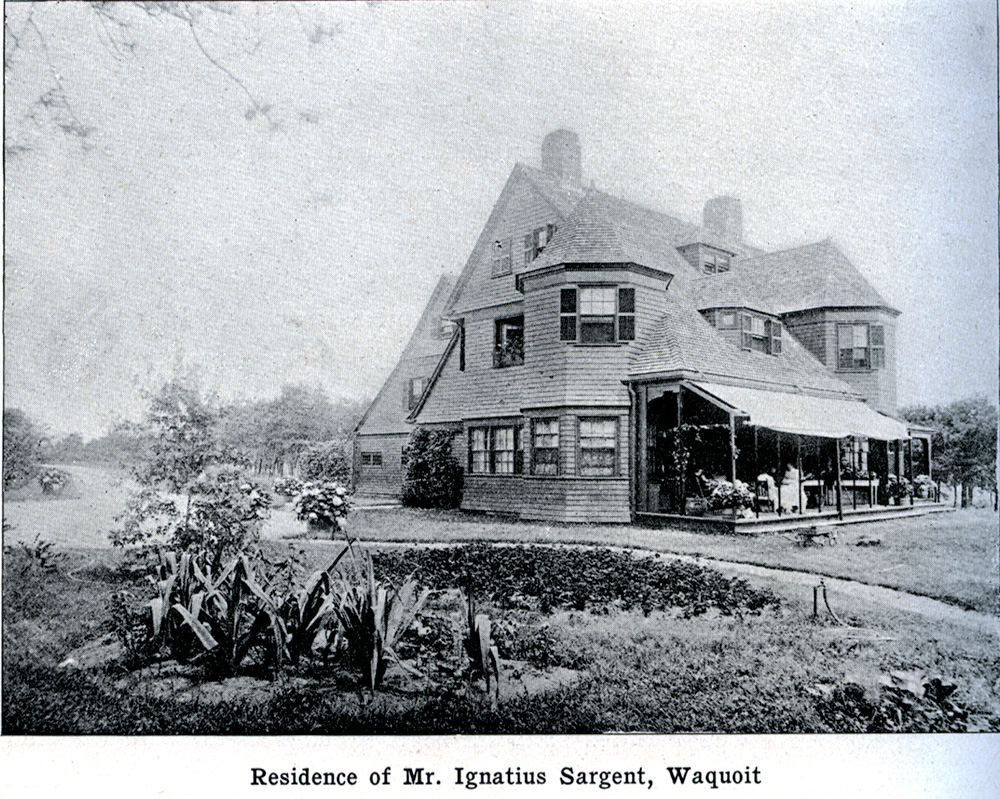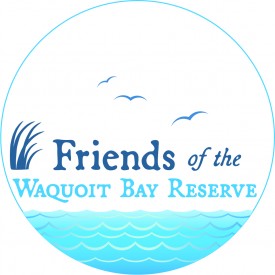History

Sitting on a 30 foot bluff overlooking the Bay, the 16 room home was built by Ignatius Sargent during the late 1880’s to serve as a summer cottage for a wealthy family. In 1900, the Munros and the Abbotts rented the home for the season while they built their own modest cottages across the bay. Alice Munro Haagersen was born in the home that summer and documented her memories in a taped interview at the Reserve. She recalled her mother saying there were only two other homes on the bay at the time. Relatives of both these families still live on the bay.
Over the years, several people owned the 23 acre estate, including Norman Rutherford who is on the deed from 1914 to 1929. This colorful character was known for cruising around town in his Franklin touring car and bringing electricity to the estate in 1915. Around 1920, he built the boathouse with space for entertaining upstairs that includes a large fireplace of Sippewissett granite. He is also responsible for the stone walled entryway on route 28 and most likely added the garages to the carriage house for his three automobiles.
Rutherford mysteriously disappeared and the estate was later transferred to Charles L. Swift, a cranberry farmer who dabbled in real estate and whose family owned many acres of bogs in the area. After the hurricane of 1938 heavily damaged the mansion, the Swifts began using the front Gate House, once the caretaker’s quarters, as their residence. Failing health and financial losses prevented the restoration of the main house, which sat empty for almost 50 years. Charles died in 1966, then his second wife Mamie died in 1974 passing ownership to her daughter Ethel Trapp. In 1982 Ethel entered into an agreement with developers with plans for both Washburn Island and the Swift Estate.
In 1981 a proposal by the Washburn Island Preserve Limited Partnership to develop both the Island and the Swift Estate really got people’s attention. The proposal called for up to 50 residential homes on the island, while the mainland estate would serve as a ferry terminal with parking for at least 150 vehicles. Island facilities would include a club house, outdoor pool, three tennis courts, decks, docking facilities and a helipad for emergencies. It was argued that much of the island would remain in its natural state and the project would end the destructive use of the island by the public that continued to take place.
The Massachusetts Department of Environmental Management (now DCR) acquired South Cape Beach in 1982 and Washburn Island in 1983 at the urging of local citizens. The newly formed non- profit group, Citizen’s for the Protection of Waquoit Bay, along with many state and local officials, supported the creation of the Reserve and the purchase of the Sargent/Swift estate as an ideal spot for the Reserve Headquarters. It was acquired by the Commonwealth with help from NOAA through eminent domain in 1987 and in June of 1988 officially joined the other 19 Estuarine Research Reserves around the country. Today there are a total of 29 Reserves, mostly in coastal states.



